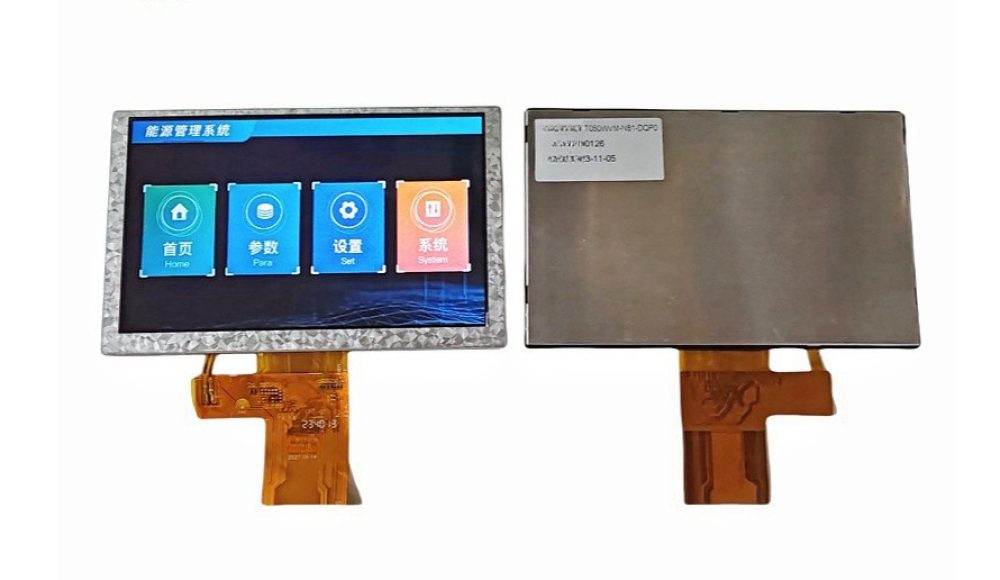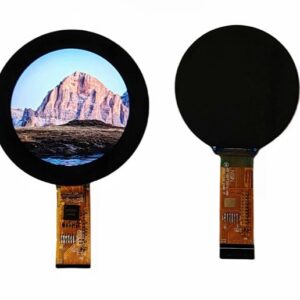When it comes to designing outdoor electronic devices, screen visibility under direct sunlight becomes a critical factor. Whether it’s a handheld industrial tool, an outdoor kiosk, or a marine navigation device, the display must remain clear and readable—even under intense ambient light.
Two popular display technologies dominate this space: TFT LCD and OLED. But which one performs better when sunlight is shining directly on the screen? In this article, we compare 5.0 inch TFT LCD screens with OLED displays, focusing on real-world outdoor performance. We’ll also introduce Nisin’s 5.0 Inch Reflection Sunlight Readable TFT LCD Screen as a prime example of display optimization for harsh lighting conditions.
Understanding the Technologies: TFT LCD vs OLED
What is a TFT LCD?
TFT (Thin-Film Transistor) LCD is a widely used display technology that relies on a backlight to illuminate pixels. A 5.0 inch TFT LCD screen offers sharp images, resolución alta, and is cost-effective for a range of industrial and consumer applications. When designed for outdoor use, it can include features like transflective or reflective layers to enhance visibility under sunlight.
What is OLED?
OLED (Organic Light-Emitting Diode) displays emit their own light, meaning they don’t need a backlight. OLEDs produce deep blacks and vibrant colors and offer excellent viewing angles. However, they are more prone to screen burn-in, reduced brightness in sunlight, and higher power consumption when displaying bright content outdoors.
Direct Sunlight: Key Comparison Factors
Let’s break down how these two technologies perform when exposed to direct sunlight:
1. Brightness and Outdoor Visibility
-
TFT LCD (Nisin’s 5.0” Reflective Model):
Nisin’s sunlight-readable TFT LCD integrates reflective enhancement film that redirects ambient light back to the viewer. This makes the screen more visible as ambient light increases—a rare advantage. Brightness levels can reach over 800–1000 nits, ensuring clarity even in direct sunlight. -
OLED:
OLEDs struggle with visibility in bright environments. Their brightness output is limited by heat and power constraints, especially in larger white-content areas (P.EJ., maps, documents). Outdoor OLEDs often require additional brightness boosting, which reduces battery life.
✅ Winner: TFT LCD (especially reflective/transflective models)
2. Power Consumption in Outdoor Use
-
TFT LCD:
Power usage is relatively stable regardless of content. With ambient light reflection, reflective TFT displays use less backlight power outdoors, which conserves battery life. -
OLED:
OLED power consumption increases significantly when showing bright content. In sunlight, where max brightness is required, OLED displays drain battery faster.
✅ Winner: TFT LCD
3. Durability and Lifespan
-
TFT LCD:
Rugged, stable over time, and not affected by static images. Excellent for industrial and long-term applications. -
OLED:
Prone to burn-in and organic material degradation, especially in high-temperature outdoor environments. Limited lifespan compared to TFT.
✅ Winner: TFT LCD
4. Cost Consideration
-
TFT LCD:
Generally more affordable, especially in medium-size displays like 5.0 pulgadas. Customization options (brillo, interfaz, coating) are widely available through manufacturers like Nisin. -
OLED:
Higher cost, especially when requiring outdoor optimizations. Fewer rugged customization options for niche industrial use.
✅ Winner: TFT LCD
Spotlight: Nisin’s 5.0 Inch Sunlight Readable TFT LCD Screen
For brands seeking a reliable outdoor display, Nisin’s 5.0 inch reflection Módulo LCD TFT is engineered for sunlight readability and rugged performance.
Key Features Include:
-
Resolución: 800×480
-
Brillo: Up to 1000 liendres
-
Reflective enhancement for clear visibility in sunlight
-
Amplio rango de temperatura de funcionamiento: -20°C to +70°C
-
Customizable interface (RGB / SPI / MCU / LVDS)
-
High contrast with low power backlight drive
This model is ideal for smart agriculture devices, terminales portátiles, outdoor medical equipment, and marine systems.
Conclusión: TFT LCD is the Clear Winner Under Sunlight
While OLED technology shines in high-end indoor applications, it falls short in outdoor readability, eficiencia energética, and durability. On the other hand, a 5.0 inch reflective TFT LCD, such as the one offered by Nisin, delivers reliable, sunlight-readable performance, menor consumo de energía, and greater long-term stability. If you’re developing an outdoor electronic product that demands clear visibility under all lighting conditions, Nisin’s sunlight-readable TFT LCD display offers a cost-effective and high-performance solution.
Ready to Upgrade Your Outdoor Display?
Explore Nisin’s range of sunlight readable TFT LCD screens, including customizable options for your industrial application. Contact our team to learn more.




